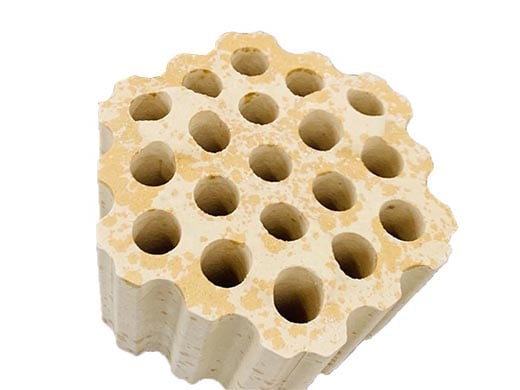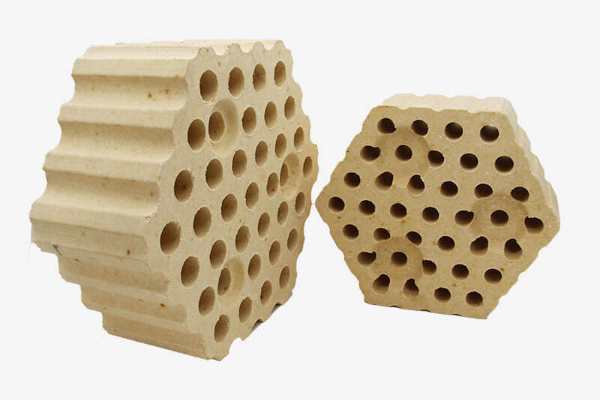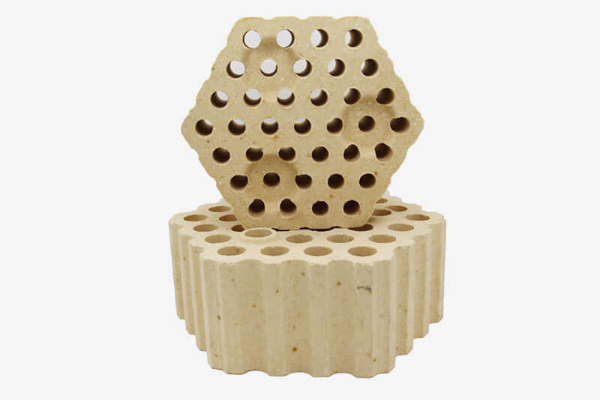Introducción a los ladrillos de control de sílice
Ladrillos de sílice son principalmente materiales refractarios ácidos compuestos de tridimita, cristobalita, y una pequeña cantidad de fases residuales de cuarzo y vidrio..

Funciones de ladrillos a cuadros
Ladrillos de damas son ampliamente reconocidos y aceptados por la comunidad de fabricación de hierro del mundo como un cuerpo de transporte de calor y almacenamiento de calor con muchas propiedades térmicas superiores, como una fuerte capacidad de intercambio de calor., Gran área de almacenamiento de calor, ventilación suave, y baja resistencia. Los ladrillos de verificación son un medio de transferencia de calor, se utiliza principalmente en la parte media y superior del regenerador de calzoncillos calientes para almacenar el calor. Desempeña un papel extremadamente importante en el proceso de calentar el aire frío en aire caliente.

Características de los ladrillos a cuadros
- Tiene una pluralidad de agujeros transparentes paralelos a las superficies laterales, además de colocar protuberancias y ranuras de posicionamiento ubicadas en las dos superficies paralelas.
- Buena estabilidad de volumen, Excelente rendimiento de fluencia bajo carga de alta temperatura, alta densidad, y baja porosidad. Las estufas de explosión de alto horno moderno generalmente adoptan una estructura de regenerador de ladrillo a cuadros.
Aplicación de ladrillos de cheque de sílice

Actualmente, Los ladrillos de verificación se usan principalmente en blastes hornos calientes, y hornos de llama. Los ladrillos de verificación se utilizan principalmente en el regenerador de estufas de explosión caliente. Los ladrillos de verificación con una determinada estructura y los agujeros de la cuadrícula están dispuestos de manera ordenada. Los agujeros superiores e inferiores de los ladrillos del verificador pueden permitir que pase el gas. De acuerdo con diferentes zonas de temperatura o requisitos técnicos, ladrillos de control de sílice, ladrillos de arcilla, etc.. se usan generalmente. En algunas estufas de explosión, ladrillos con alto contenido de alúmina, ladrillos de mullita, ladrillos de trichnita, etc.. también se seleccionan. La función de la estufa de explosión caliente es convertir el ventilador El aire frío enviado al alto horno se calienta en aire caliente, Y luego el aire caliente se envía al alto horno a través del conducto de aire caliente para reacción de combustión. La estufa de explosión caliente de alto horno tiene un período de ardor y un período de estilvado, y los dos períodos de trabajo giran periódicamente. Durante el período de ardor, El gas de combustión de alta temperatura quemado pasa a través de los agujeros de los ladrillos del verificador del alto horno y transfiere el calor a los ladrillos del verificador. Durante el período de suministro de aire., El aire frío del ventilador ingresa al alto horno y es calentado por los ladrillos del verificador en aire caliente y enviado al alto horno a través de un conducto de aire caliente.
 Fábrica de refractarios de Rongsheng
Fábrica de refractarios de Rongsheng
WeChat
Escanea el código QR con wechat